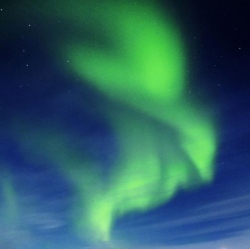
Jupiter’s largest moon, Ganymede, has solidified its membership in the growing cadre of solar system locales where liquid water flows beneath the surface. “The solar system is now looking like a pretty soggy place,” Jim Green, director of NASA’s Planetary Science Division, said March 12 at a news conference.
The ocean showed itself not with plumes or pools but via subtle changes in Ganymede’s aurora, the moon’s version of the Northern Lights. Jupiter’s magnetic field should interfere with Ganymede’s, causing the moon’s aurora to rock back and forth by about 6 degrees. Observations with the Hubble Space Telescope, however, showed that the aurora shifted by only about 2 degrees. Joachim Saur, at the University of Cologne, Germany, and colleagues deduced that an electrically conductive fluid beneath the surface, a saltwater ocean, for example, would create a secondary magnetic field that counteracted Jupiter’s interference.
Observations with the Galileo probe, which orbited Jupiter from 1995 to 2003, hinted at Ganymede’s ocean, but the flybys were too brief to provide unambiguous evidence. Jupiter’s moon Europa and Saturn’s moon Enceladus also hide subsurface oceans and researchers suspect that there may be water within Jupiter’s moon Callisto and the dwarf planet Ceres. “Every observation we make,” said Heidi Hammel, a planetary scientist at the Space Science Institute in Boulder, Colo., “takes us one step closer to finding a truly habitable environment.”
